Data Modelling | Artificial Intelligence for Class 10 PDF Download
AI modelling Approaches
There are two main approaches commonly used by researchers for AI modeling:
- Rule-Based Approach
- Learning-Based Approach
Let's start with the Rule-Based Approach.
Rule Based Approach
- A Rule-Based Approach relies on predefined data and rules provided to the machine, which then reacts based on these instructions to produce the desired output. Essentially, rule-based learning adheres to the relationships or patterns in the data specified by the developer. The machine follows these rules to perform tasks and create a model using coding.
- Consider the following example for AI project cycle modeling with a rule-based approach:
- You have data for 100 employees and 100 businessmen. To train your machine, follow these steps:
- Input and label the data as either employees or businessmen.
- For data related to employees, the machine will use the rules you defined for employees to label it accordingly.
- Similarly, it will apply the rules for businessmen.
- For example, if you provide characteristics such as earning money and providing a service for employees, and investing money and providing a service for businessmen, the machine will learn these distinctions.
- In a CBSE curriculum handbook, there's an example of a rule-based approach using images. Suppose you have 100 images of apples and 100 images of bananas. To train your machine, you label each image as either an apple or a banana. When the machine is tested with a new image, it will compare it to the trained images and, based on the labels, identify the new image as either an apple or a banana.
- This method is referred to as the Rule-Based Approach. In this example, the rules provided to the machine are the labels assigned to each image in the training dataset.
Please review the following image: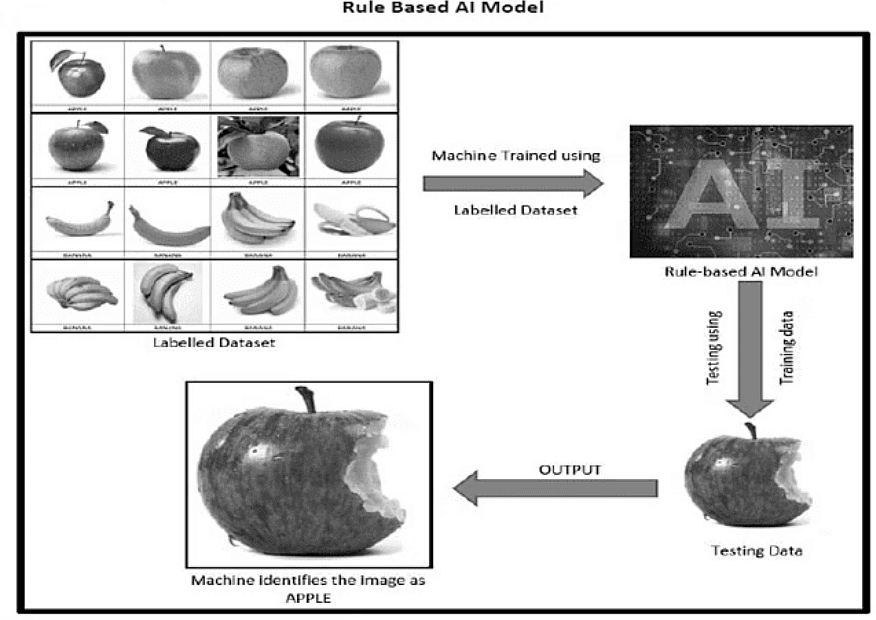
Learning Based
- The machine is provided with data and the desired output, and it creates its own algorithm (or set of rules) to match the data to the output.
- In this approach, the relationships or patterns in the data are not defined by the developer.
- The machine receives random, unlabeled data and determines patterns or trends on its own.
- This method is useful for handling unlabeled and random data, which is difficult for humans to interpret.
- The machine analyzes the data, extracts similar features, and clusters similar datasets together.
- Ultimately, the machine reveals trends observed in the training data.
- This approach is ideal for training on unpredictable data or when there is limited knowledge about the data.
- Example: Consider a dataset of 1000 images of stray dogs from your area. Without knowing details like breed, color, or other features, you use a learning-based approach. The AI will identify patterns in the images, such as clustering based on color, size, or fur style, and may even discover unexpected patterns you hadn’t considered.
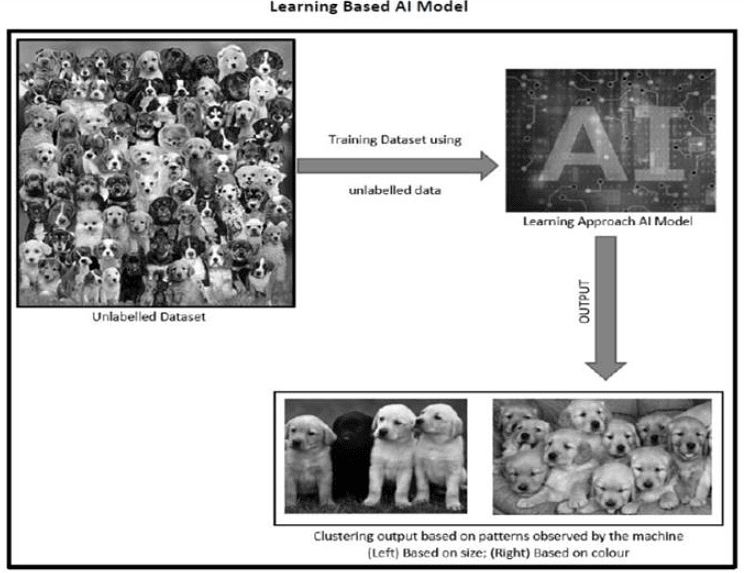
Decision Tree
- The decision tree is a widely used and fundamental model in data science, structured like a tree with decision paths and possible outcomes. It is similar to the rule-based approach.
- The decision tree consists of various nodes and follows a top-to-bottom structure.
- The topmost node in the decision tree is called the root node.
- The tree branches out until it reaches the terminal or leaf nodes.
- Nodes are interconnected by arrow lines to show the flow of decisions.
- Now, let’s discuss the common terms associated with decision trees.
Common Terms
- Root Node: As mentioned earlier, this is the topmost node of the decision tree.
- Splitting: This is the process of dividing a node into two or more sub-nodes.
- Decision or Interior Node: This is where the splitting occurs, i.e., a node that divides into additional sub-nodes.
- Leaf Node or Terminal Node: As previously noted, these are the endpoints of the tree.
- Branch or Subtree: A section of the decision tree that represents a smaller part of the overall tree is called a branch or subtree.
- Parent Node and Child Node: The top node is referred to as the parent node, while the node derived from it is known as the child node.
Different Parts of Decision Tree
A decision tree is composed of different types of nodes, each serving a specific function:
- Decision Nodes: Represent decisions and are usually depicted as squares.
- Chance Nodes: Represent probabilities or uncertainties and are shown as circles.
- End Nodes: Represent the final result or outcome and are illustrated as triangles.
Activity 1: Make a Decision Tree
- As you know, the decision tree is an example of a rule-based approach. The structure of a decision tree begins with the root node and ends with the leaves, connected by branches that represent different conditions.
- Before creating a decision tree, consider the following steps:
- Observe Your Data Carefully: Analyze the data thoroughly to understand its characteristics.
- Determine the Root Node: Decide which data point will serve as the root node.
- Determine the Leaf Nodes: Decide which data points will be the end nodes or leaves.
- Analyze and Refine the Data: Examine the data to identify and remove any unnecessary information.
- Review the decision tree image provided in the CBSE study material for a practical example.
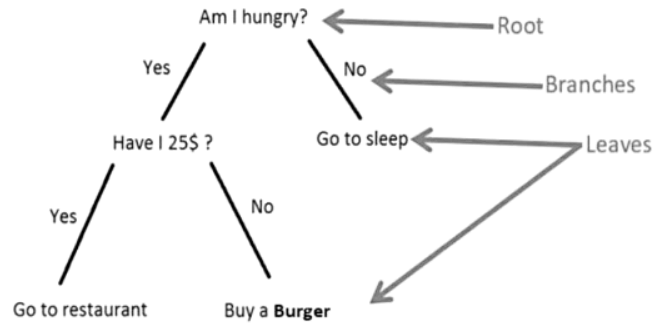
- In the provided decision tree example:
- The top question or condition, "Am I Hungry?", is the root node.
- The branches from this root are "Yes" and "No".
- The final decisions or outcomes—"Go to Sleep," "Go to a Restaurant," and "Buy a Burger"—are the leaf nodes.
- The question "Have I $25?" is the interior node.
- Based on this decision tree:
- The tree has 2 branches.
- The tree has 3 leaves.
Points to remember
When creating a decision tree, keep the following points in mind:
- Carefully examine your dataset.
- Identify the patterns associated with your output leaves.
- Select one output and determine the common links for similar outputs.
- Identify and eliminate redundant data from the dataset.
- Opt for a simplified dataset for your decision tree.
Now, let's look at another example from the CBSE study material. The dataset consists of 4 parameters used to predict whether an elephant will be spotted. These parameters are: Outlook, Temperature, Humidity, and Wind.
Draw a Decision Tree for this dataset: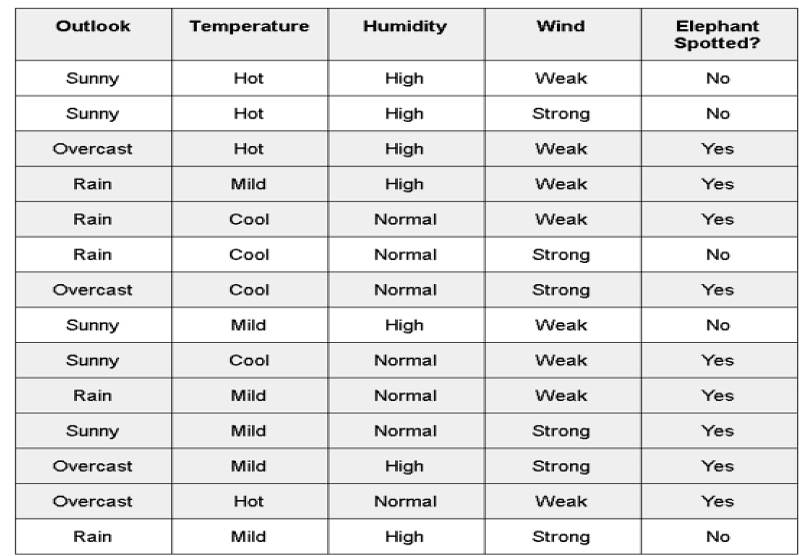
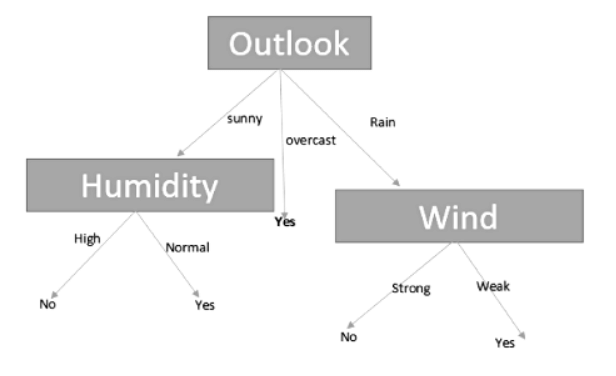
Common decisions in the dataset are as follows:
- If Outlook is Sunny and Humidity is High, then Elephant Spotted = No.
- If Outlook is Sunny and Humidity is Normal, then Elephant Spotted = Yes.
- If Outlook is Overcast, then Elephant Spotted = Yes.
- If Outlook is Rain and Wind is Strong, then Elephant Spotted = No.
- If Outlook is Rain and Wind is Weak, then Elephant Spotted = Yes.
You can use this information to construct a decision tree based on the given dataset.
Activity 2: Pixel It
For the Pixel It activity, designed for a class of 40 students in groups of 4, the required materials are as follows: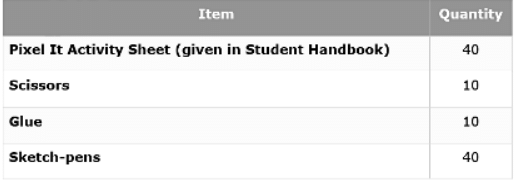
Purpose
- The main objective of this activity is to explore how computers classify and interpret images, particularly focusing on pixel-based images. As discussed, a single pixel represents one dot. Through this activity, you'll gain insight into image processing and classification, illustrating how computers perceive images. This approach is a part of machine learning used in Computer Vision (CV) applications.
- In modeling, we've covered two fundamental approaches:
- Rule-Based
- Learning-Based
- We’ve already discussed the Rule-Based approach. This activity will help you understand the Learning-Based approach for modeling. Follow these steps:
- Cut out or draw a 6 x 6 matrix of square boxes on a sheet.
- Write an uppercase letter within the matrix, ensuring it spans the entire height of the boxes.
- The letter should fill the matrix from top to bottom.
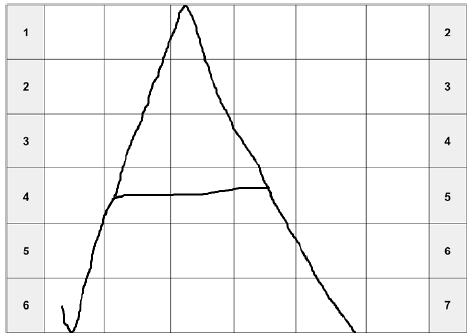
- Now apply colour to the boxes on which lines of that alphabet have fallen.
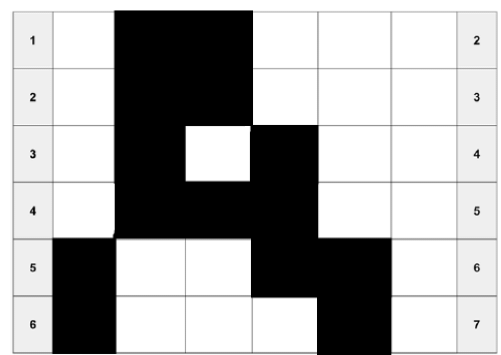
- Now cut the horizontal stripes of the matrix in this manner like 1-2,2-3,3-4,4-5,5-6 and 6-7.
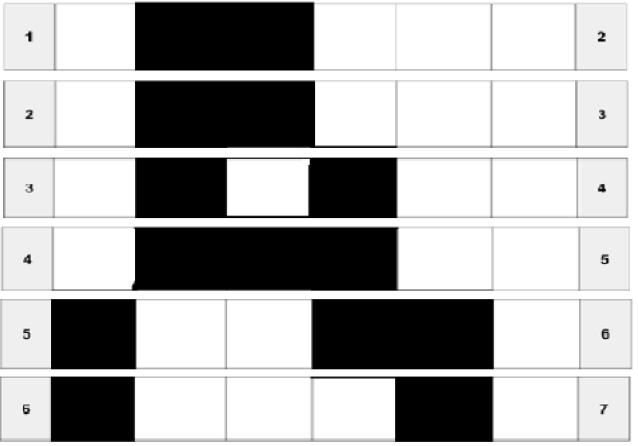
- Next, paste all the strips together to create a continuous paper string. Ensure that the last block does not overlap with the first block of the next row and that there are no gaps between the first and last blocks.

- Identify students in your class who have chosen the same alphabet as you. Place their strings beneath yours and add up all the colored blocks to generate a series of numbers.
- Blocks without color are counted as 0, while colored blocks are counted as 1. For example, if a column has 3 colored blocks, the total for that column is 3.
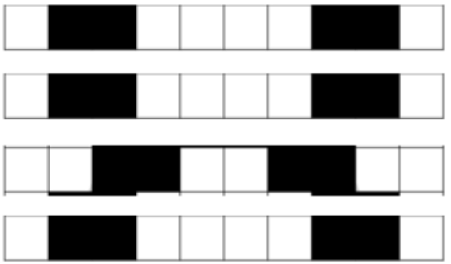
Learning outcome
From this activity, you can conclude the following:
- Images in Computers: Images stored on a computer are divided into individual pixels.
- Machine Learning Approach: Machine learning uses a similar pixel-based approach for its applications.
- Pixel Analysis: The computer examines each pixel and compares them. If the pixels match, it indicates that the images are the same.
This activity helped in creating an intelligent model to determine if an alphabet is the same or different by breaking it into 36 blocks and processing it. The model is trained to recognize the same alphabet in different handwriting styles. During testing, the model checks if the colored blocks align. If most blocks align, there is a high probability that the alphabet is the same; otherwise, it indicates that the alphabet is different.
|
31 videos|79 docs|8 tests
|
FAQs on Data Modelling - Artificial Intelligence for Class 10
| 1. What is the purpose of a decision tree in AI modeling? |  |
| 2. How does pixel-based modeling work in AI? |  |
| 3. What are the advantages of using decision trees over other AI modeling techniques? |  |
| 4. Can pixel modeling be applied to real-time image processing? |  |
| 5. What are some common applications of decision trees and pixel modeling in AI? |  |





















